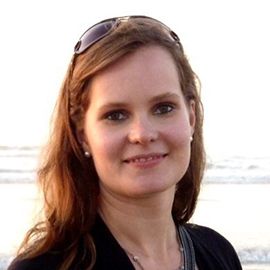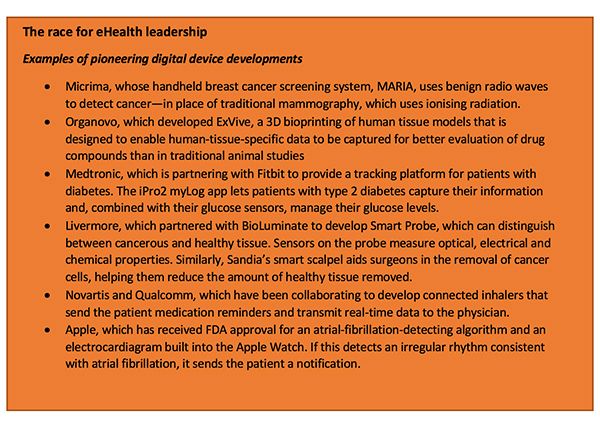The Implications of Connected Medical Devices & Digital Healthcare
Loetitia Jabri considers the broader implications as healthcare providers embraces new digital connectivity options as part of the Medicine 2.0 era.
Empowered by the latest technology, patients today expect to be more actively involved in their own health matters. As healthcare providers embraces new digital connectivity options as part of this Medicine 2.0 era, Loetitia Jabri considers the broader implications – such as what happens to any data being collected.
Loetitia Jabri

New options to connect with information, help and care services in the digital age mean that patients are now increasingly empowered and open to playing a more active role in their own healthcare.
In this new era, dubbed Medicine 2.0, emerging uses of advanced technology include the digitalisation of diagnosis, and disease prevention through the use of wireless/mobile health solutions including smartphone apps, wearables, gamification and remote monitoring.
The medical device sector, in particular, represents a natural fit for Medicine 2.0, and innovative companies have been quick to take advantage of the possibilities. Over the last 10-15 years the technological revolution has seen the emergence of digital medical devices that empower patients and close the communication gap with healthcare providers. Today smartphone apps and devices such as Fitbit, the Apple Watch, and other connected objects-such as connected blood pressure monitors-keep track of patient activity and generate valuable data.
All of the medical information generated is playing an increasingly important role in the new doctor–patient relationship, which in turn is becoming more collaborative. ‘Connected’ medical devices give patients greater control over their health data, and in turn enable doctors to use the data to prompt beneficial patient behaviour.
With advances in telemedicine, meanwhile, and with rapid increases in the numbers of next-generation medical devices capable of harnessing artificial intelligence, both doctors and patients now have even more medical information available to them.
Compliance considerations
Regulatory authorities are eager to promote Medicine 2.0 through the development of wireless devices. In October 2010, the US Federal Communications Commission and the US Food and Drug Administration (FDA) partnered to encourage investment in wireless healthcare devices, and the European authorities have become increasingly willing to give such solutions the CE marking required on drug products to be sold in Europe.
Despite regulators’ moves to encourage digital innovation, the complex nature of the new types of devices, added to their speed of development, the ways data is used, and who by, means both the life sciences industry and the authorities will have to prepare for change. Policymakers and regulators must keep pace with the innovations emerging across the industry.
One of the biggest challenges involves efficiently achieving validations of digital health devices and smartphone apps – that is, ensuring the intended use of a medical device and the management of its data. Companies must have objective evidence of validation to meet product specifications. Consider, for example, wireless technologies, whose validations will be needed to ensure the quality of the device, and to protect patients from interference and unsecured lines. Complexity arises because device validation will also depend on the network being used to transmit and receive data.
As medical devices increasingly look to harness advances in artificial intelligence - enabling devices to guide patient therapy, for instance - regulatory processes will have to adapt here too.
Another issue may be a future requirement to perform double-blind studies involving large patient cohorts for combination products. Indeed, the FDA has encouraged randomized, double-blind, sham-control trials for class III devices such as pacemakers.
Data privacy matters
Regulators must also take into account the changing patient–physician relationship. Today’s patients expect to be more involved in their own care, and digital medical device solutions are making that increasingly possible. But how that involvement might affect the regulatory framework is not fully understood, despite ongoing workshops between the European Commission and medical devices manufacturers.
Certainly, medical device manufacturers will need to tread a fine line between innovation and patient safety. Data from patient sensors must be properly integrated with medical information; otherwise, there’s a risk that the information could be misinterpreted and endanger the patient.
Beyond patients’ physical wellbeing, there are inevitable concerns about data privacy. There are strong defences in place to protect personal data now, and medical data is among the most vigorously safeguarded because of its ultra-sensitive nature. So developers will need to ensure, and build confidence in the expectation, that a patient’s data is secure from external access and use.
And what about patient-developed devices, and the potential regulatory and safety consequences that could result from these? For example, the #WeAreNotWaiting diabetes movement resulted in the development of apps, cloud-based platforms, and reverse-engineering of currently marketed products aimed at helping people with diabetes. Most notable was the development of an artificial pancreas. But because the associated system was developed without regulatory oversight, its reliability is unknown, which raises concerns that patients could be put at risk.
Perhaps the most complex issue to keep on top of is accelerating change in other markets. For example, China has made significant changes to its medical device regulations, aimed at reducing the complexity of the approval process and making it easier for smaller medical technology companies to bring products to market. That change removes a lot of complexity for medical devices companies in China and enables them to become more competitive.
Whatever the regulatory challenges and other issues digitised devices can introduce, there is enormous potential for companies to leverage new capabilities in the age of Medicine 2.0: from wireless body sensors; to patient-specific, 3D-printed implantable devices; pumps that enable people with diabetes to deliver insulin to themselves; and even implants with sensors via which a patient can send a message to the doctor.
Companies can take advantage of the widespread use of smartphones to develop medical device apps for patients, too. Another powerful avenue could be to develop monitoring devices for children-particularly young children who are unable to easily communicate their health issues.
Intelligent advances: Medicine 3.0
As we move closer to an even more advanced age, Medicine 3.0 – which will see artificial intelligence capabilities being integrated into medical devices - companies will need to be nimble in responding to the market’s demands and expectations, and regulators will have to be ready to adapt to ever-changing innovation.
The future is here, and patients are ready to embrace it. Personalised medicine means giving doctors and patients the abilities to adjust and calibrate treatment through the use of data derived from a range of self-indicators. At the same time, the rise of big data-the combination of data collected about and by the patient-presents a wealth of potential, if managed properly.
Medical device companies must find ways to efficiently gather and manage all of this data so they can extract reliable, insightful and actionable knowledge and information for the benefit of patients, for population health, and with a view to overcoming potential technological and therapeutic challenges.
As opportunities become richer and more complex, the likelihood is that firms will need to enter into sophisticated new types of partnership, to build complete ecosystems around advanced, digitally-enabled health solutions and services. Potential candidates might include network service operators for the data connections, and biotech firms, not to mention the regulators themselves - whose job it is to ensure progress doesn’t happen at the expense of patient safety or real patient benefits.

Loetitia Jabri is regulatory, pharmaceutical & medical devices platforms associate director at ProductLife Group.
Is Artificial Intelligence a ‘Product’? Products Liability Implications for AI-Based Products
April 10th 2025As the physical products we use evolve to become increasingly complex, traditional products liability frameworks may not always fit to provide remedies for harm that can result from using novel product types.